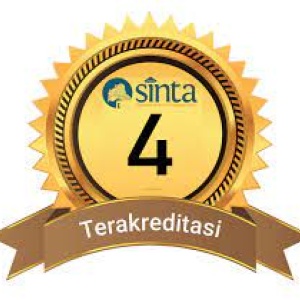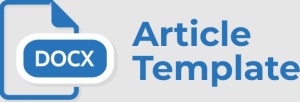Empat Naskah Surat Incung pada Tanduk Kerbau dari Mendapo Rawang, Kerinci: Suntingan Teks dan Terjemahan
DOI:
https://doi.org/10.37014/jumantara.v11i2.939Keywords:
Incung Letters, Horn Manuscript, KerinciAbstract
Manuscript of Incung Letters founded in Kerinci, written on buffalo horn and bamboo generally. Four of all horn manuscripts is saved by Depati Sungai Lago from Koto Beringin, Mendapo Rawang as heirlooms of his clan. This manuscripts have trasliterated by Voorhoeve in 1941 and have re-digitalization by Uli Kozok between 2012-2013. However, Voorhoeve's transliteration is imperfect and not satisfactory. The purpose of this research is to obtain text edition and translation that easier to understand by reader. The stage of this research is inventaring, describing, editing and translating. The method utilized in the text edition is standard edition method. As result of this research, is known that this manuscripts narrated the six episodes about ancestors history from local inhabitant in the indigenous territory of Tanah Rawang.References
Alimin, dkk. 2003. Sastra Incung Kerinci. Kerinci:Dinas Pariwisata dan Kebudayaan Kabupaten Kerinci.
Andhifani, Wahyu Rizky. 2012. "Naskah Kuna Pusaka Raja Sulah Desa Siulak Mukai Kerinci Jambi". Jurnal Siddhayatra ,Vol. 17 (2): 62-69.
Andhifani, Wahyu Rizky. 2013. "Naskah Ulu Tanduk Kerbau: Sebuah Kajian Filologi". Forum Arkeologi, Vol. 26 No.2: 145-152.
Baried, Siti Baroroh, dkk. 1985. Pengantar Teori Filologi. Jakarta: Departemen Pendidikan dan Kebudayaan.
Kozok, Uli. 2006. Kitab Undang-Undang Tanjung Tanah: Naskah Melayu yang Tertua. Jakarta: Yayasan Obor Indonesia.
Kozok, Uli. 2009. Surat Batak: Sejarah Perkembangan Tulisan Batak Berikut Pedoman Menulis Aksara Batak dan Cap Si Singamangaraja XII. Jakarta: Kepustakaan Populer Gramedia.
Locher-Scholten, Elsbeth. 2008. Kesultanan Sumatra dan Negara Kolonial: Hubungan Jambi-Batavia (1830-1907) dan Bangkitnya Imperialisme Belanda. Jakarta: KITLV-Jakarta.
Pandey, Anshuman. 2016. "Preliminary to Encode the Kerinci Script in Unicode". diakses 23 Agustus 2020. https://unicode.org/L2/L2016/16074-kerinci.pdf
Qadri, Haji. 1995. Hukum Adat Sakti Alam Kerinci: Suatu pedoman dan Ico pakai di Tigo Luhah Siulak Tanah Sekudung. Kerinci: Cetakan Mandiri.
Sunliensyar, Hafiful Hadi. 2019. Tanah, Kuasa dan Niaga: Dinamika Relasi antara Orang Kerinci dan Kerajaan-Kerajaan Islam di Sekitarnya pada Abad XVII hingga Abad XIX. Jakarta: Perpusnas Press.
Sunliensyar, Hafiful Hadi. 2018. "Idu Tawa Lam Jampi: Mantra-Mantra dalam Naskah Surat Incung Kerinci". Jurnal Manuskripta, 8(1): 31-53.
Voorhoeve, Petrus. 1941. Tambo Kerintji: Disalin dari Toelisan Djawa Koeno, Toelisan Rentjong dan Toelisan Melajoe jang Terdapat pada Tandoek Kerbau, Daoen Lontar, Boeloeh dan Kertas dan Koelit Kajoe, Poesaka Simpanan Orang Kerintji, P.Voorhoeve, dengan pertolongan R.Ng.Dr. Poerbatjaraka, toean H.Veldkamp, controleur B.B., njonja M.C.J. Voorhoeve, Bernelot Moens, goeroe A. Hamid,. [diketik ulang oleh C.W. Watson].
https://ipll.manoa.hawaii.edu/indonesian/research/tambo-kerinci (diusahakan oleh Uli Kozok, 2006)
Voorhoeve, Petrus. 1970. Kerintji Documents. Bijdragen tot de Taal-, Land- en Volkenkunde. 126 ( 4): 369-399.
Westenenk, L.C. 1922. Rentjong-schrift. Tijdschrift voor Taal-, Land- en Volkenkunde, vol. 61. Batavia: Albrecht en Co./'s-Gravenhage: M. Nijhoff.
Lain-Lain
Naskah Tanduk Beraksara Incung milik Dipati Sungai Lago, Koto Beringin Rawang. diakses 01 April 2020. https://eap.bl.uk/collection/EAP117-2-1
Downloads
Published
Issue
Section
License
Copyright (c) 2020 Jumantara: Jurnal Manuskrip Nusantara

This work is licensed under a Creative Commons Attribution-ShareAlike 4.0 International License.
- This statement is the author's commitment to respect copyright, both in terms of citing other people's work and utilizing journal content. If necessary, the author can send an Authenticity Statement of Article stating that "this work is the author's original idea and has never been sent to another publisher and published in any publication"
- The author retains copyright.
- The moral rights of publication belong to the author.
- Formal legal aspects in the use of journal publications refer to the Creative Commons Attribution-ShareAlike 4.0 (CC BY-SA) license, which means that journal content can be used freely for any purpose.










